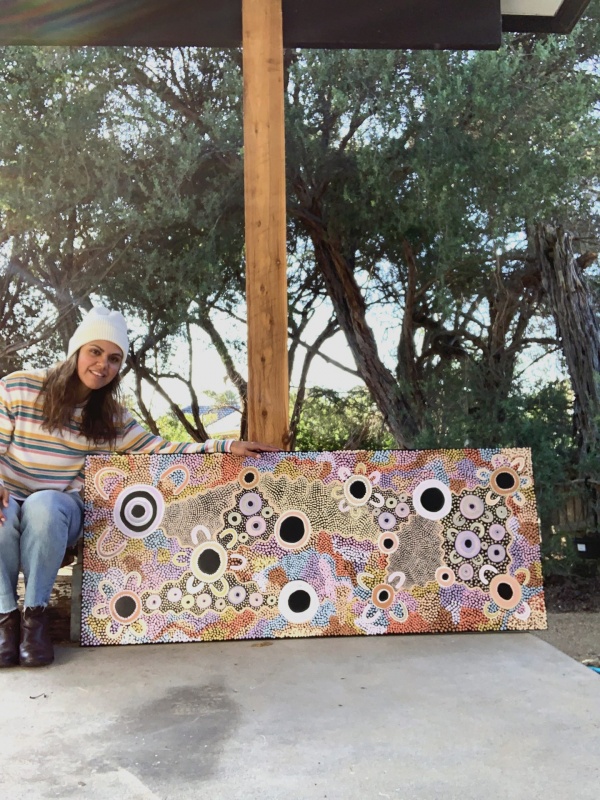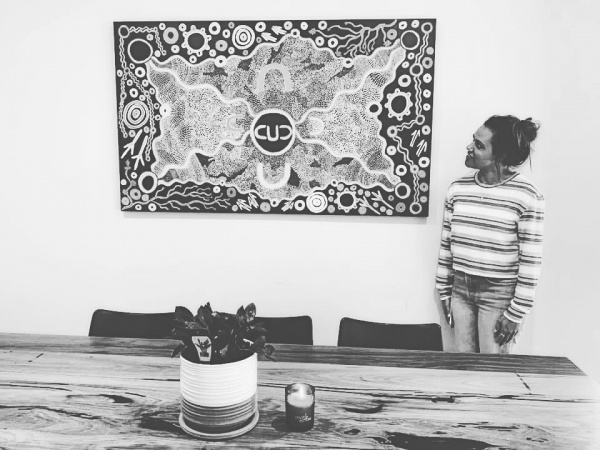
Artist and teacher Shanai Kellet wants Australians to become more connected to their heritage.
- Culture
Why we have so much to learn about sustainability from our First Nation’s People
Indigenous artist Shanai Kellet on art, culture and nature
Our First Nation’s People have been custodians of the land for over 60,000 years. In that time they’ve also been creating art, first on rocks, and now on canvas that represents their culture, it’s a way of passing folklore down between generations and today’s contemporary Aboriginal artists are continuing that tradition of storytelling.
For Yorta Yorta, Yura woman, contemporary artist and educator Shanai Kellet, painting connects her spiritually to the land and her culture. She believes that every Australian should do “just a little bit of homework when it comes to understanding the depth of understanding our First Nation’s People have of the interdependent relationship between an individual and nature.

“This reciprocal relationship between the land and people is sustained by the environment and cultural knowledge,’’ Shanai says.
“The land is our mother, we are of the land, and the land provides us with food, water and culture. It is our duty to protect and preserve it in any way we can.”
From how to ethically buy indigenous art to her connection to nature, here’s our chat with Shanai.
What was your childhood like and where did your love of art come from?
I grew up on the Mornington Peninsula, travelling Australia, connecting to my culture in different ways. I drew inspiration as a little girl watching my mother paint. It gave me the eagerness to practice and develop my own unique style. I learnt by doing and watching. I have always been self conscious of my own art though and it’s taken me three years to get the courage to even start an Instagram page to showcase my work!
How does your connection to nature inspire you?
I view the environment and the world in an abstract way and I suppose that shows in my art. Rivers, sunsets, gum trees flowering, sand patterns, dune middens and the wonderful colours of the underwater of our country are what I love. Everything I see is portrayed through universal dot/line/symbol patterns that run through my cultural routes.

Shanai’s nature inspired “Coral Reef” was accepted into the Gorman Clothing People’s Choice Awards
Is it a spiritual practice for you?
When I am ‘on country’ (in the Northern Territory) painting, that is when I’m the closest to being connected spiritually to the land and my culture.
What tips do you have for someone who wants to ethically buy Indigenous art?
My best tip is to speak to the artist themselves. I think it is vital to make sure the artist is receiving 100 per cent of the profit. There are many companies out there who are ripping people off, which saddens me. Especially remote artists when there is a language barrier. Buying Indigenous art through the right channels ensures the money goes back to the artist and the community and creates long term sustainability for the Indigenous community-owned-and-controlled arts centres.

Shanai Kellet’s artwork, “Summer Dreaming”
What are the biggest issues do you think in your industry?
Fake Aboriginal artworks, non-Indigenous people using the symbols and dot work for their own purposes… the list goes on. That’s why it’s important to communicate with the artist and ask questions to the people who are selling the work.
Have you had continued increased interest since the Black Lives Matter movement?
At the time yes, however it has since backed off. I guess that’s just how society operates. I hope that through awareness and education more government changes and action will exist for future generations and I’m hopeful that non indigenous people have somewhat of a ‘ah ha’ moment where they just get it!
